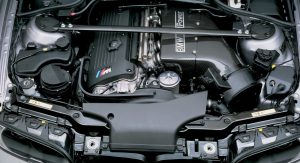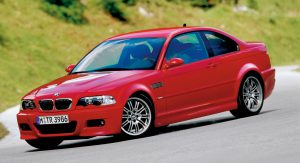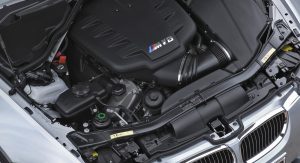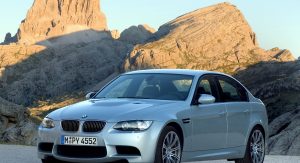With the launch of the new and slightly improved 3 Series, BMW has revised the model’s engine labels, causing a little bit of confusion. For instance, in Europe, the new 330i replaces the old 328i, but still has a 2.0-litre engine.
A while back, things used to be different. A 328i rocked a 2.8-litre engine, a 330i had a 3.0-litre engine and so on…
Now, we’re trying to figure out which are the top five engines BMW fitted to the 3 Series range throughout the years. Yes, including the M models.
#5 – BMW M42 B18, 1,796 cc, straight-four, 138 BHP (E30, E36)
Now, now, hold your horses; it may not be the crème de la crème to come from Bavaria, but hear us out. It came packaged in a lightweight e30 and e36 body, in the form of the 318iS. We’ll admit, it’s not BMW’s best, but this 1.8-litre motor brought the BMW sports-car feeling to the masses in the late 80’s and early 90’s. This DOHC 16-valve beauty was light, easy to maintain, dependable and rev-happy, making the 3 Series a balanced and fun vehicle. It even had some interesting performance features, such as a forged steel crankshaft and a welded tubular exhaust manifold, instead of the iron cast ones.
#4 – M30 B32, 3210 cc, straight-six, 190 BHP. (E30)
Have you ever heard of the 333i? If not, no one would blame you since it was available only in South Africa. Nonetheless, it was an official work of Bavarian-trained engineers and it was a hoot. The massive 3.2-litre straight-six engine, taken from a 733i, was squeezed in an E30 Coupe body with the help of Alpina. With its free-revving characteristics, it developed 194 BHP and a lot of grunt in a time when the original M3 developed 192 BHP from its 2.3-litre 4-pot.
#3 – M47, 1951cc, Diesel straight-four, 136 BHP (E46)
With this engine, BMW has shown that a Diesel can be fun. In fact, the 320d powered by this 134 BHP 16-valve motor, was faster than the 2.0-litre 6-cylinder 320i, which developed 148 BHP. Sure, both cars achieved the 0 to 100 km/h sprint in 9.9 seconds, but from there on, the torquier Diesel pulled up an advantage.
Soon after its launch, the 3 Series powered by the M47 set a high standard for affordable, reliable and economical sports-sedan. Sounds like a paradox? Well, that’s why the 320d is so successful to this day.
#2 – S54, 3,246 cc, straight-six, 338 BHP. (E46)
Ok, enough toying around with 1.8-litre engines and diesels, it’s time to get out the big guns. This 3.2-litre monster, featured in the E46 M3, is undoubtedly one of the best engines BMW ever created. It’s based on the M54 DOHC straight-six engine and uses its aluminum block and a one-piece aluminum head. It has individual throttle bodies for each cylinder, lightweight pistons, larger inlet valves, high pressure VANOS for variable valve timing and the list goes on and on and…
It’s not that far from a racing engine and it was the last naturally-aspirated straight six mounted on an M3. Its power is enough to propel the M3 from 0 to 100km/h in 5.1 seconds up to its limited top speed of 250km/h.
#1 – S65, 4,361 cc, 414 BHP. (E90/92/93)
What’s the easiest way to develop a V8? Well, in BMW’s case, getting rid of two cylinders from the S85 V10 engine. Yup, the V8 fitted in the 4th generation of the M3 is derived from the monstrous, Formula 1 inspired, road-going V10 BMW had in its line-up. It even has the same basic architecture, sharing the 92 mm bore and 75.2 mm stroke as the V10.
Thanks to its all-aluminum construction, the engine weighs only 202 KG, which means is 15 KG lighter than the S54 unit. Furthermore, it has a Brake Energy Regeneration system, which means the alternator charges the battery only during braking and decelerating. And here comes the bast part: this engine was also available on the 4-door version of the M3, making it the most hardcore BMW 3 Series sedan ever made.
Which is your favorite 3 Series engine?














